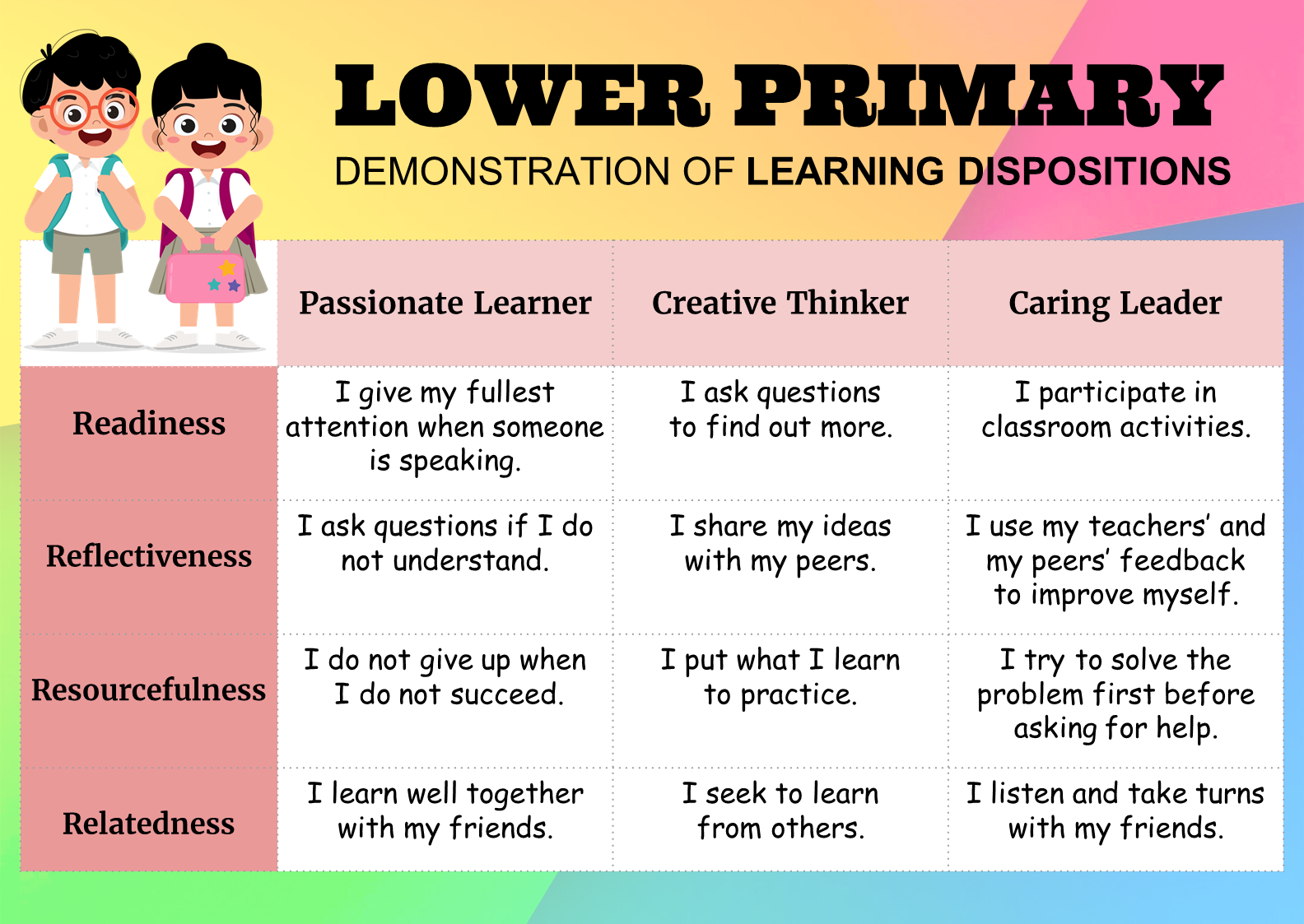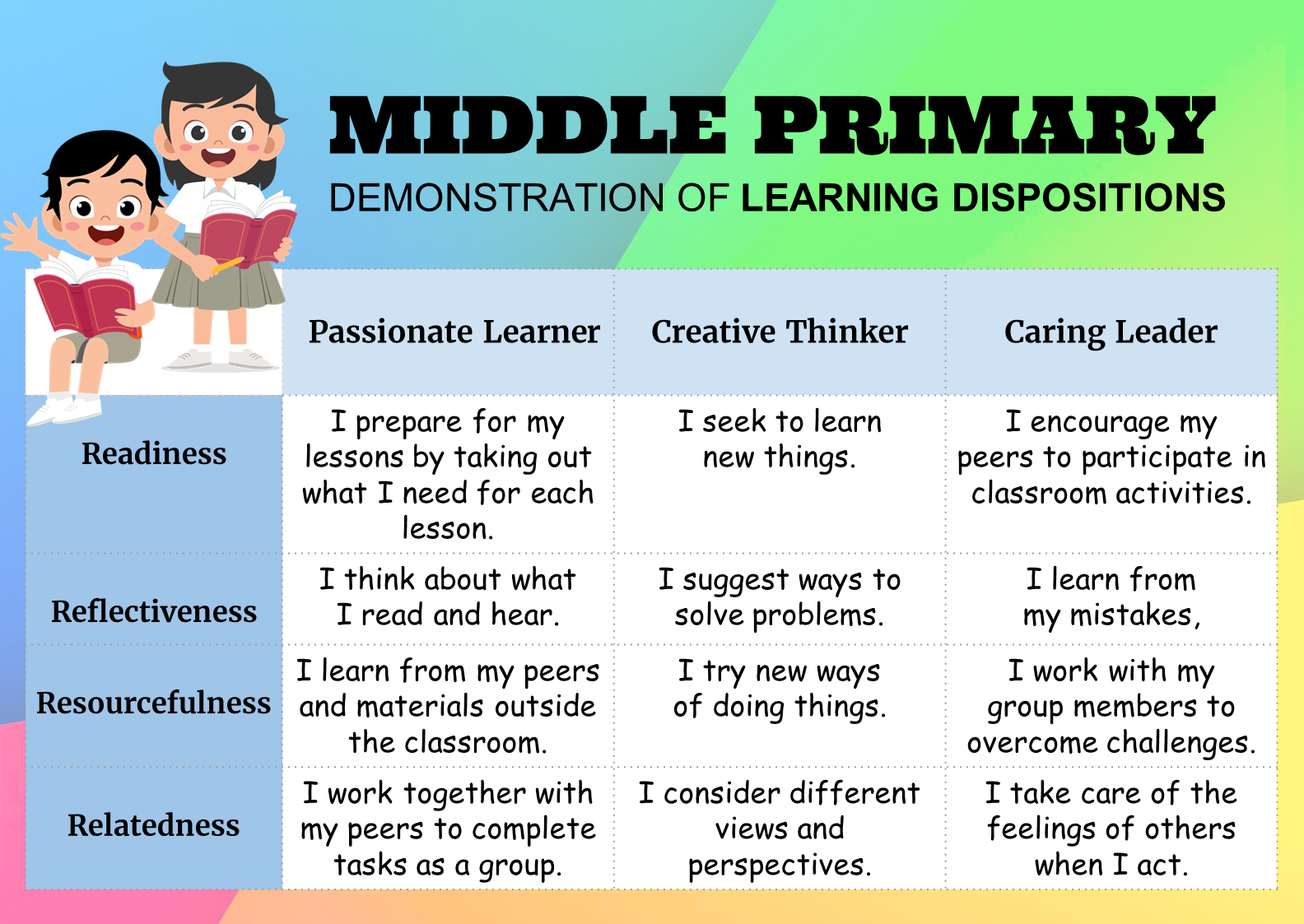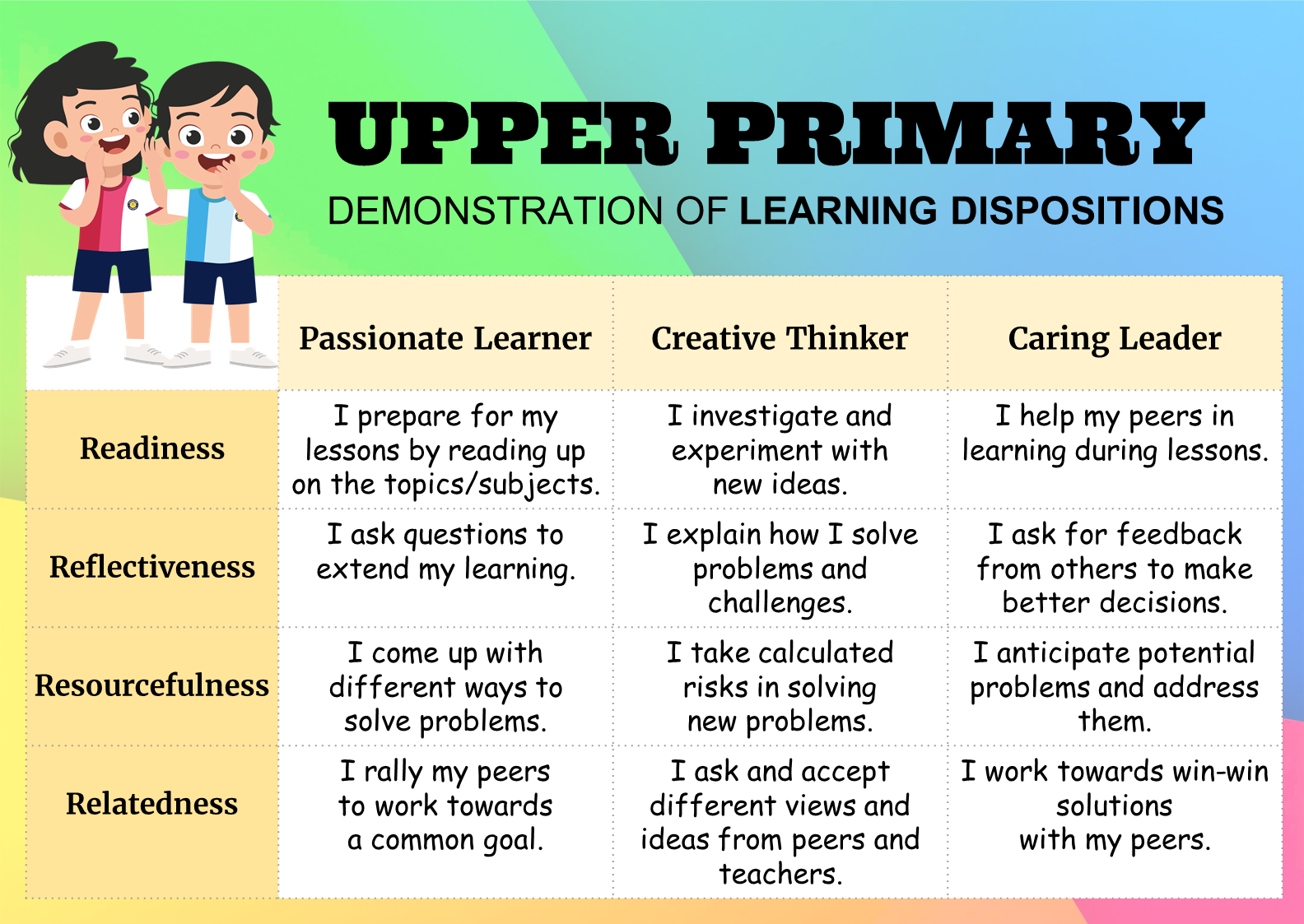Learning Dispositions
Power @ YNPS
Learning dispositions, or habits of learning, are the different characteristics with which children approach the learning process. Some have referred to dispositions as “enduring habits of mind and action; the tendency to respond to situations in characteristic ways” (Aistear, 2009, p.54). A child’s disposition to learning affects the attitude with which they learn. This, in turn, directly affects the effort that they are willing to put in. Cultivating positive learning dispositions goes a long way to creating positive learning outcomes.
Encouraging Positive Learning Dispositions in Students
We are committed to helping our students understand that different habits and ways of thinking can make learning easier. At Yu Neng Primary School, we have identified four key learning dispositions we will focus on, namely Reflectiveness and Readiness (categorised as habits of mind); Resourcefulness and Relatedness (categorised as habits of action). The first disposition under each category, Reflectiveness and Readiness, take on the personal dimension, while the second set takes on the team dimension.All four dispositions are equally important. We can only be effective learners when we have developed both habits of mind and action, along with the personal and team dimensions, as learning is both a personal and social undertaking.
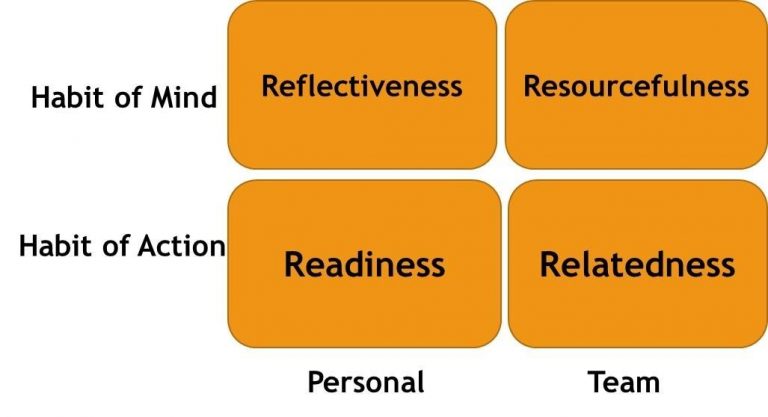
Introducing Positive Learning Dispositions into the Classroom
Teachers are encouraged to plan learning experiences that help children acquire skills and the disposition to use those skills. We have designed these visuals to facilitate related processes during lessons. Our goal is to foster a positive classroom environment and help students be the best learners they can be!
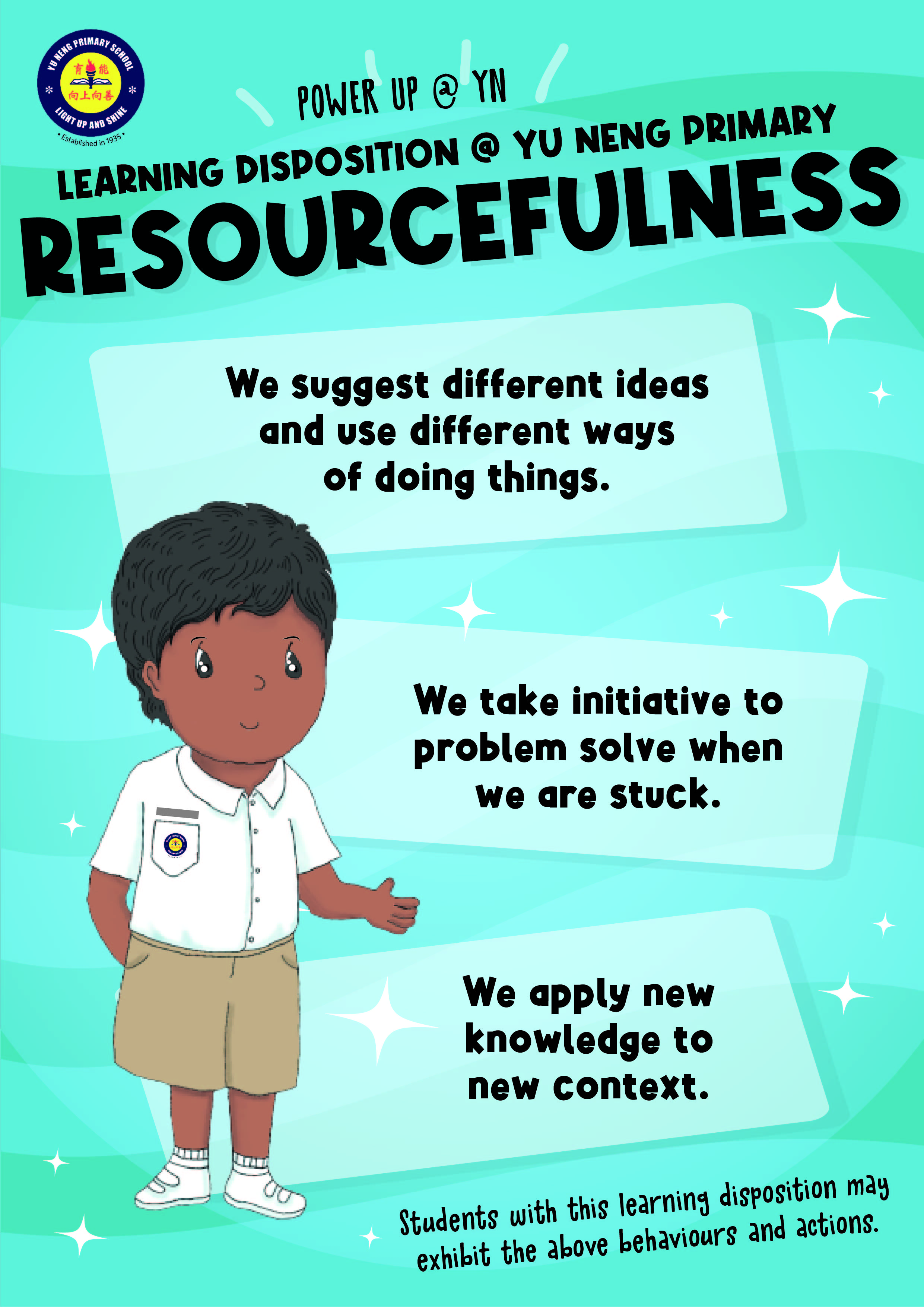
|
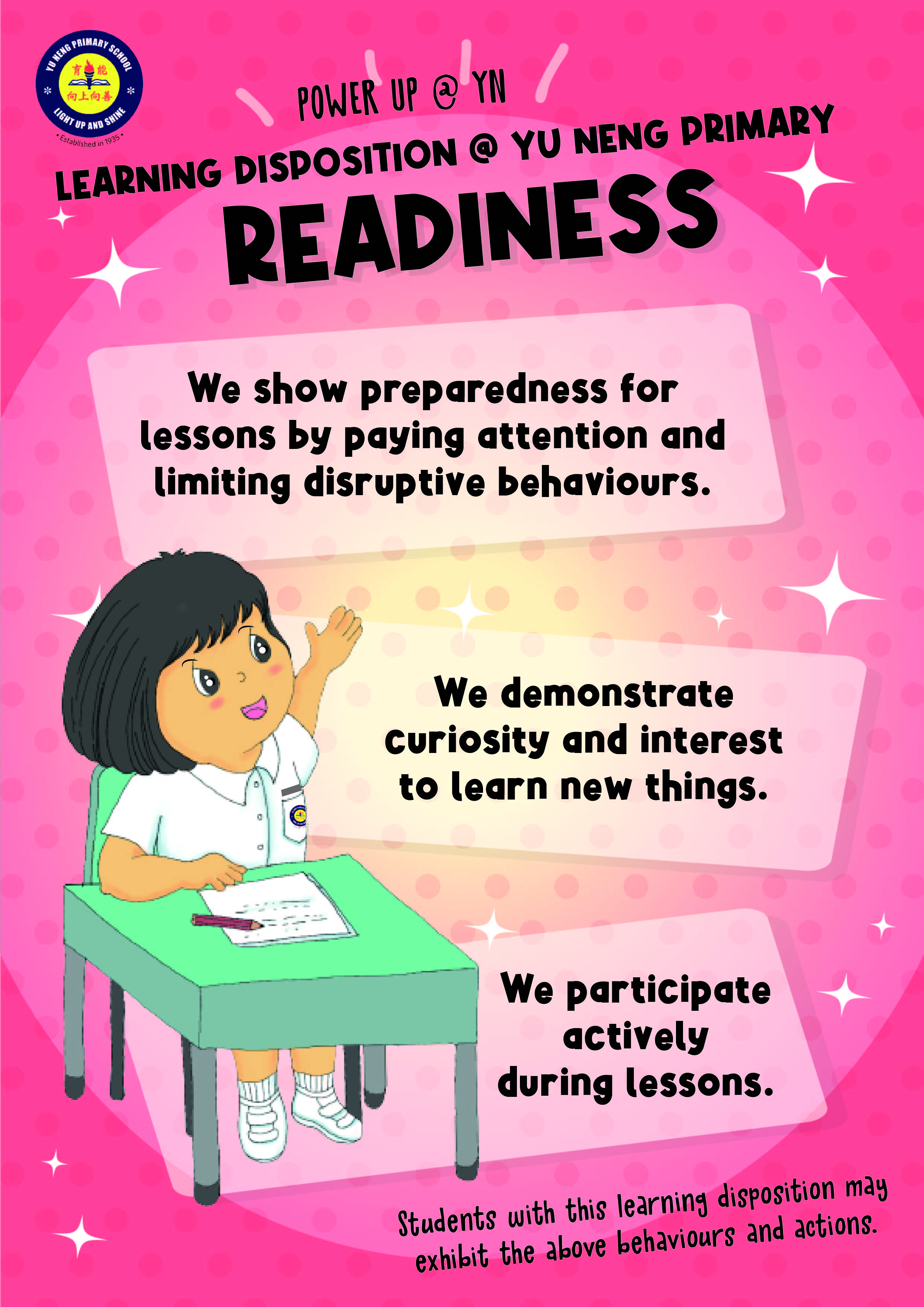
|
|---|---|
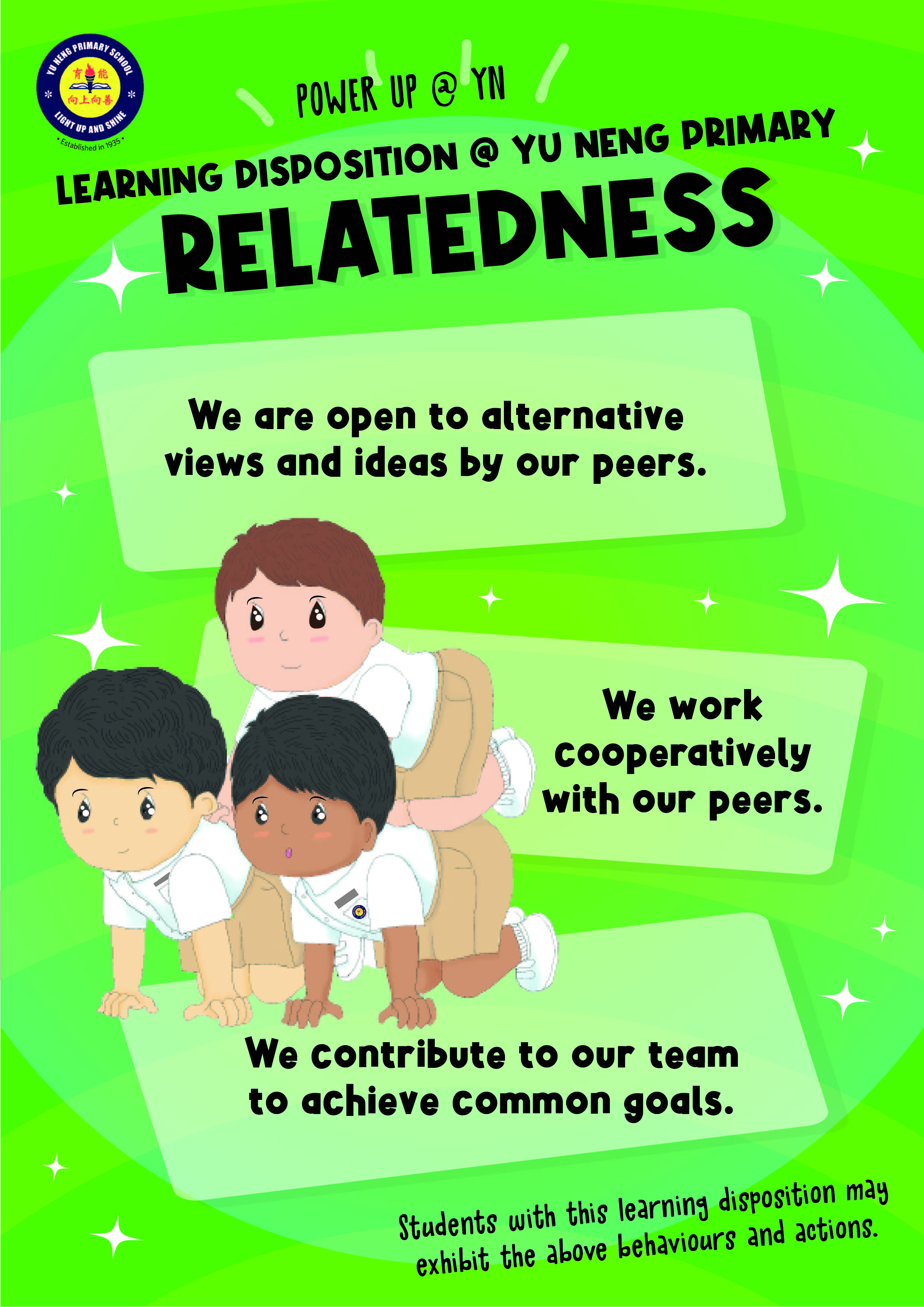
|
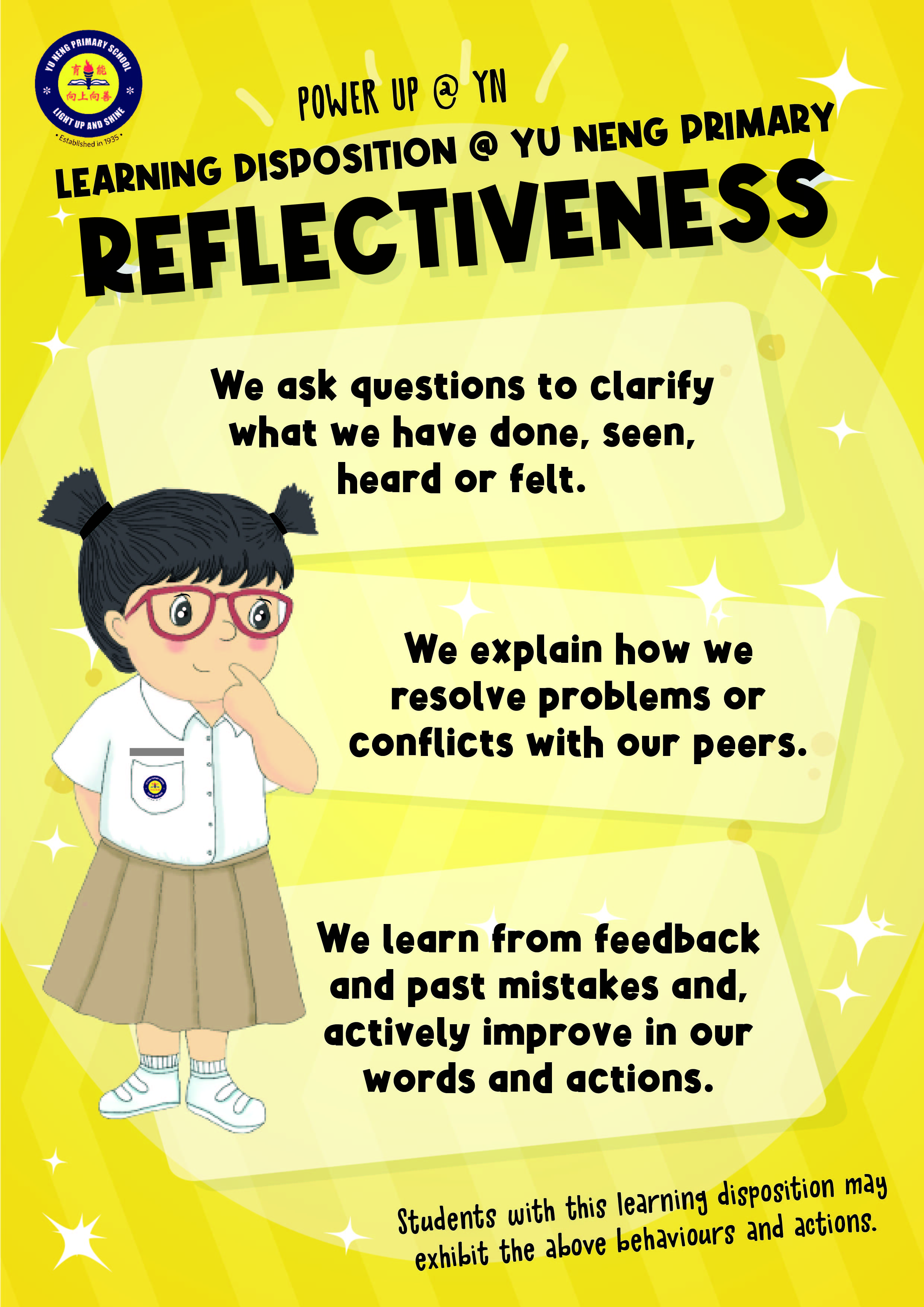
|
